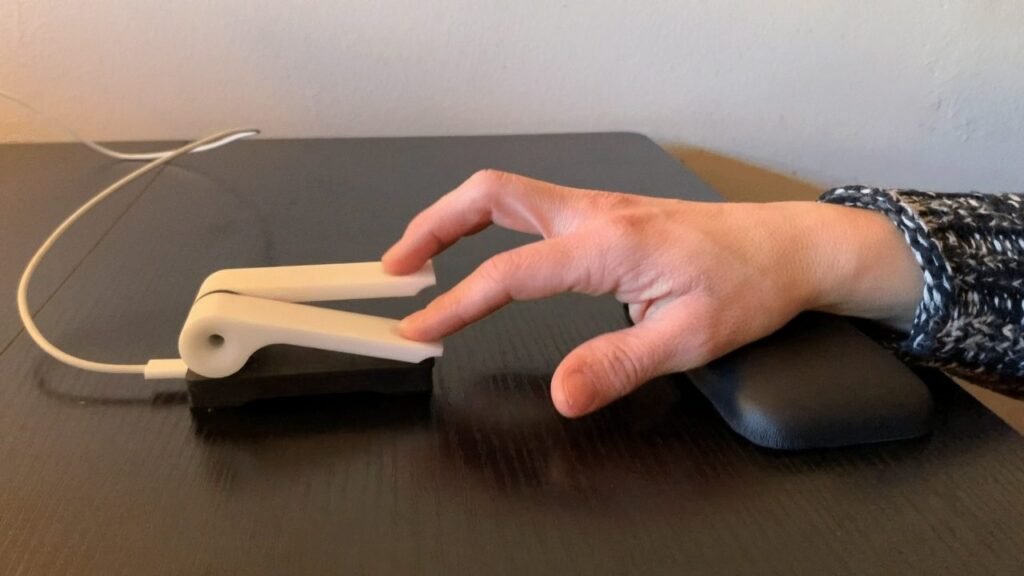Stanford Medicine has developed a portable system that allows Parkinson’s patients to monitor their motor symptoms from home and share data with clinicians in real time. The system includes a handheld device called the KeyDuo and a smartphone-connected platform known as Quantitative DigitoGraphy Care. Together, they enable patients to perform a 30-second finger-tapping test that captures detailed metrics like press force, speed, and tremor—offering a precise, objective view of motor function.
Parkinson’s disease affects movement and is typically assessed during infrequent clinic visits using subjective rating scales. With only a small number of movement disorder specialists available, many patients go long periods without expert care. This new system aims to fill that gap by providing reproducible, high-resolution data that clinicians can use to adjust treatments remotely.
The technology originated from a clinic for performing artists with dystonia, where researchers used a computerized keyboard to measure motor control. When a pianist with Parkinson’s tried the system, the team saw clear differences in performance depending on medication timing—leading to the creation of a simplified, portable version.
Recent studies show the system’s promise. In one trial, patients used it at home for 30 days, revealing how symptoms fluctuated throughout the day. Another study showed it could detect tremors with 98% sensitivity—often missed in standard exams.
Lead researcher Dr. Helen Bronte-Stewart compares its potential to that of continuous glucose monitors for diabetes, offering patients better control and clinicians more actionable insights. The system could also streamline drug development by enabling remote trials with fewer participants and richer data.
Article from Stanford University: The new tech that could improve care for Parkinson's patients
Journal article in Nature: Remote real time digital monitoring fills a critical gap in the management of Parkinson’s disease

